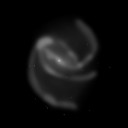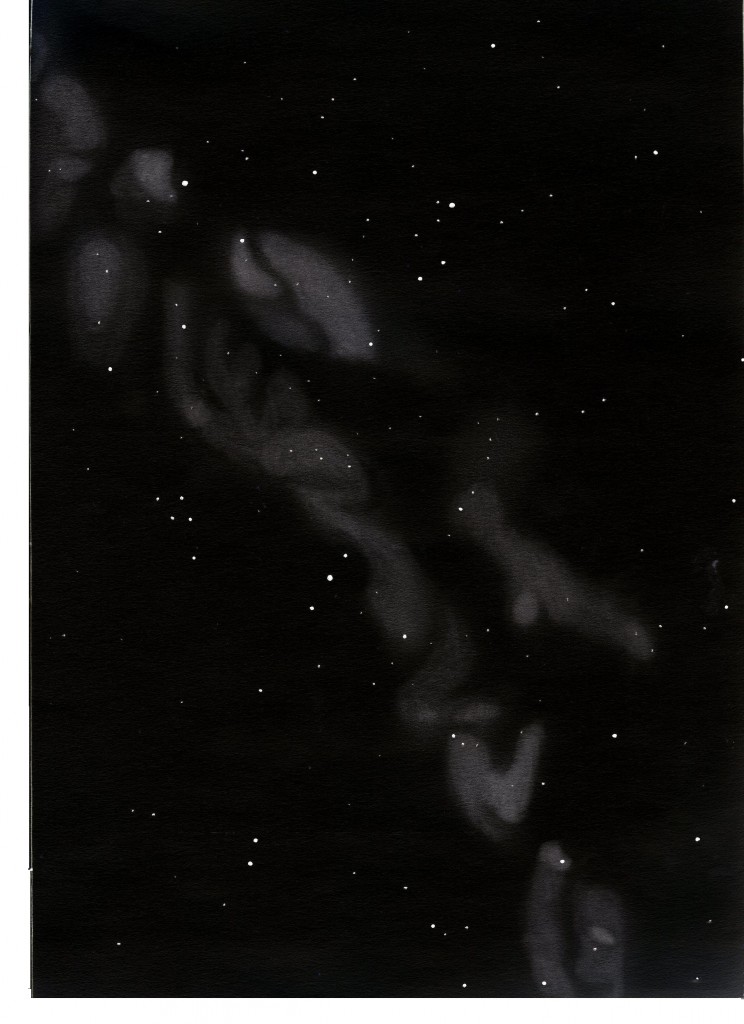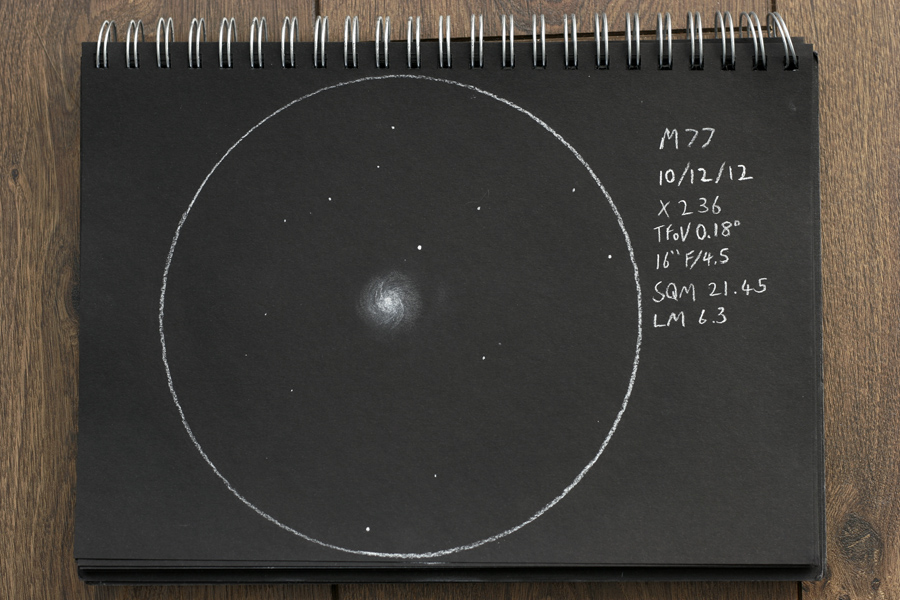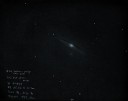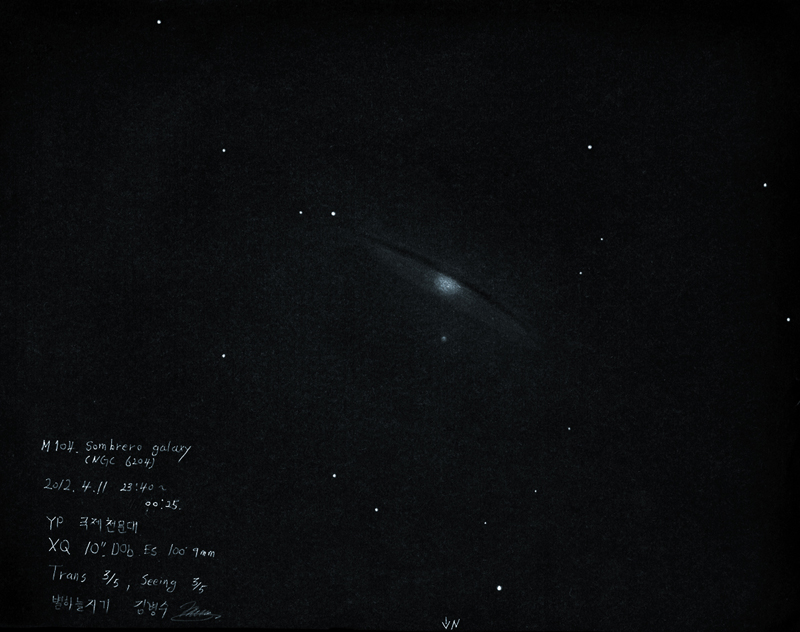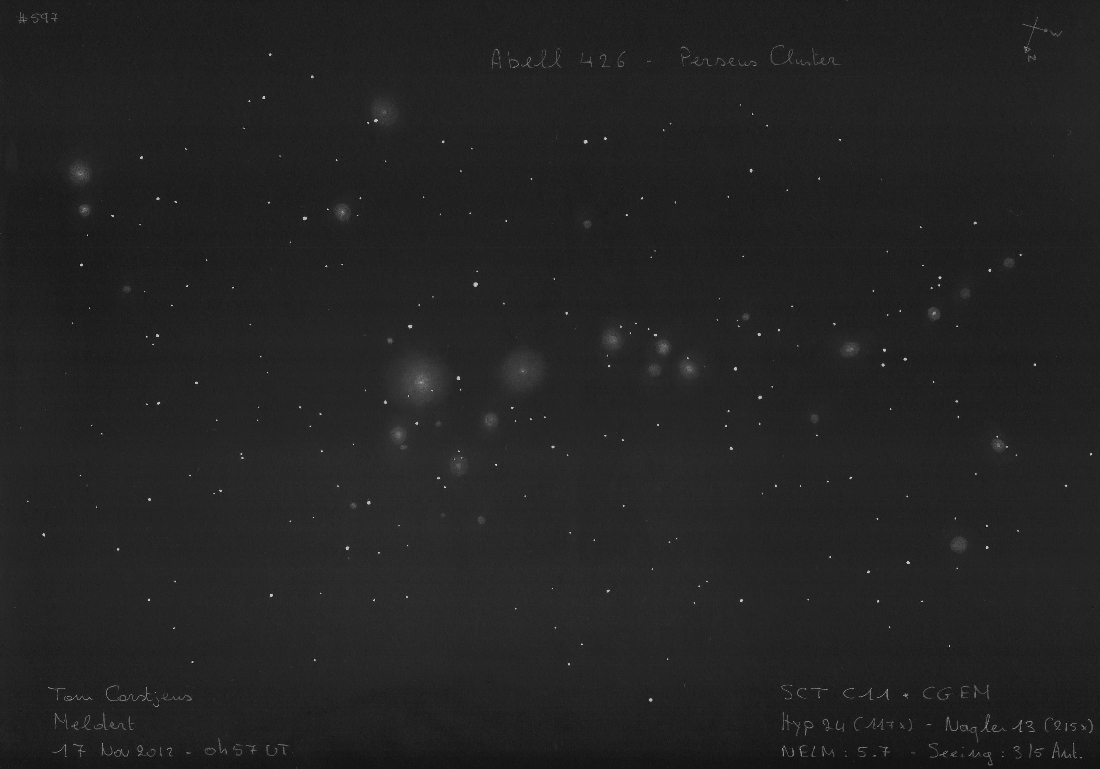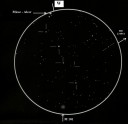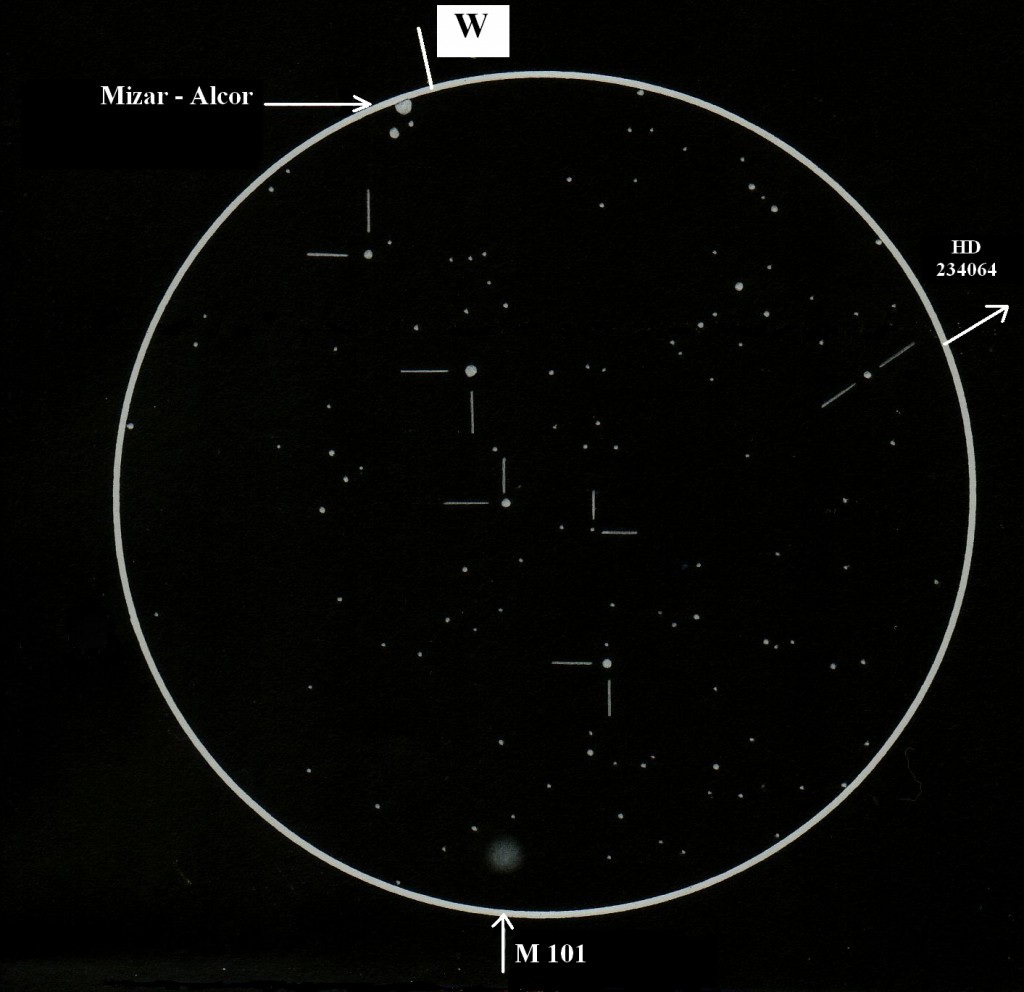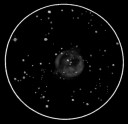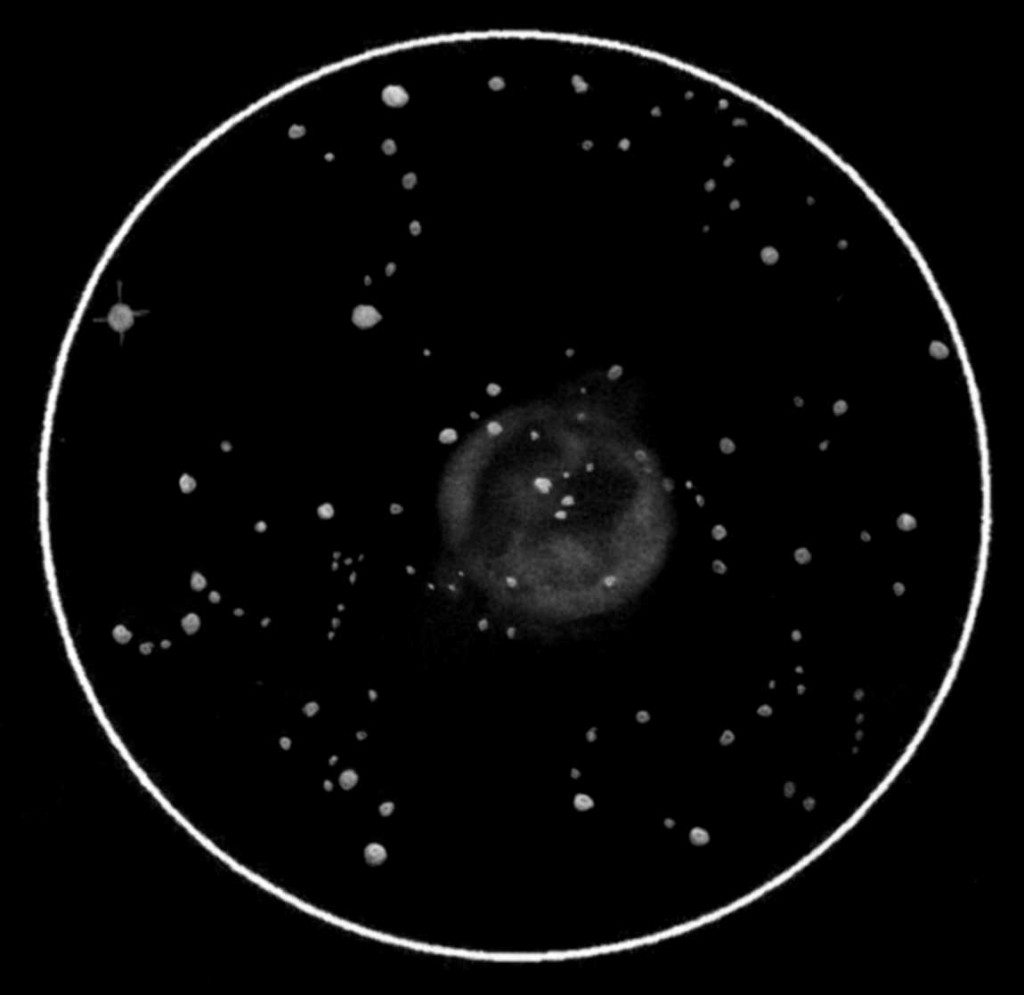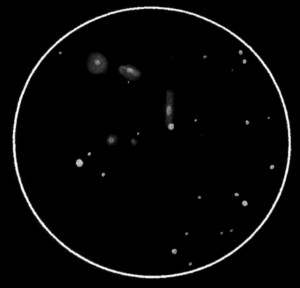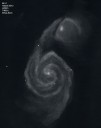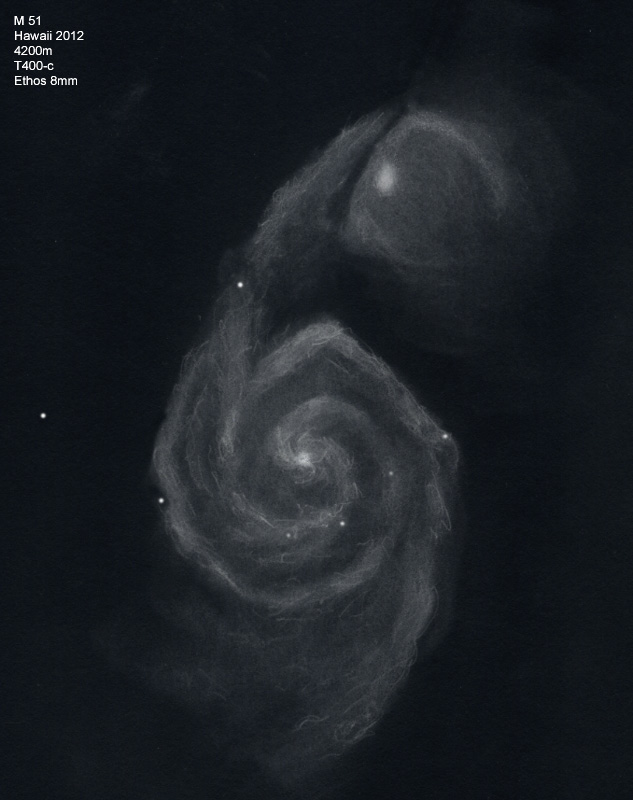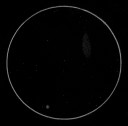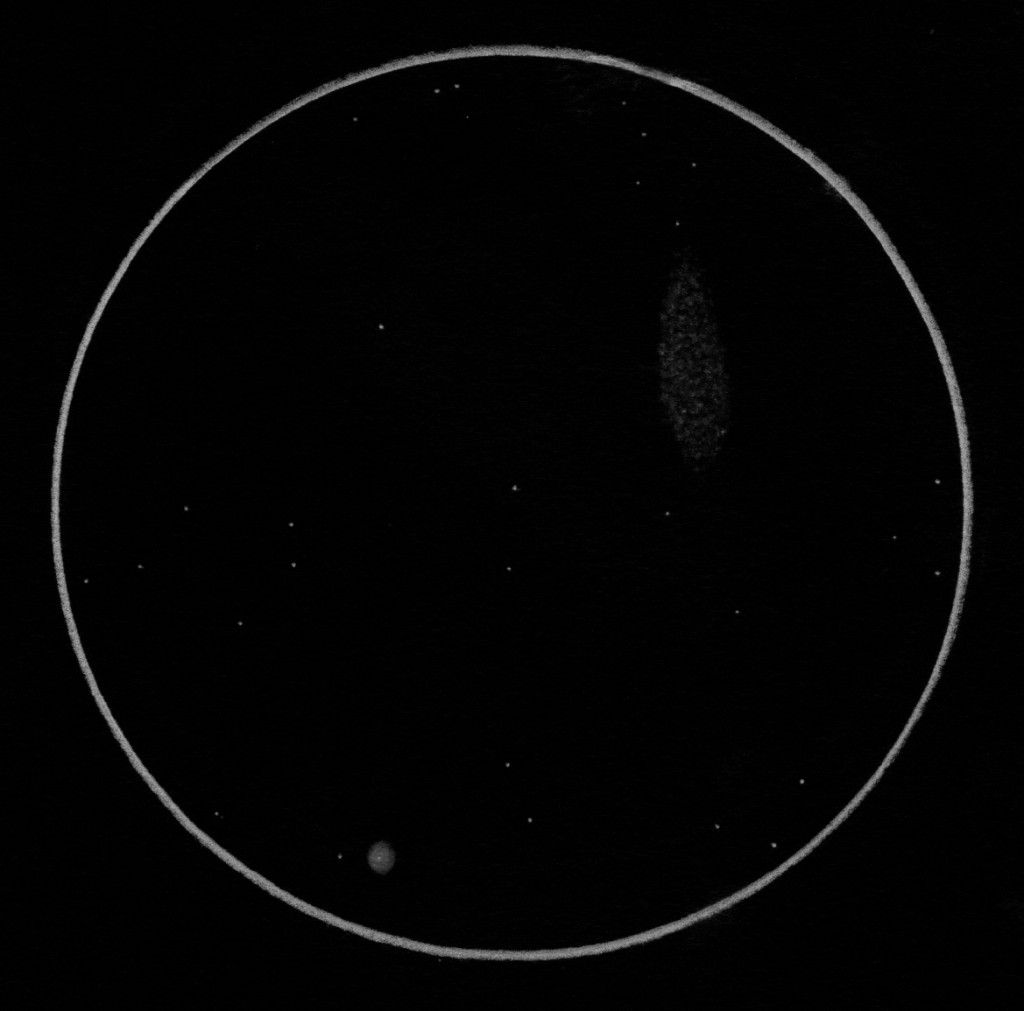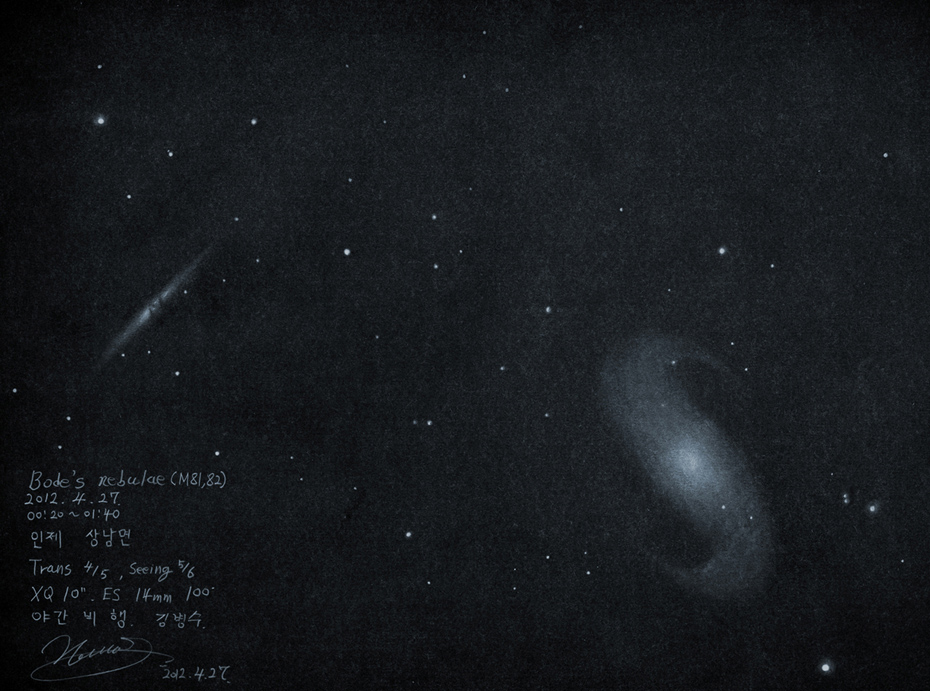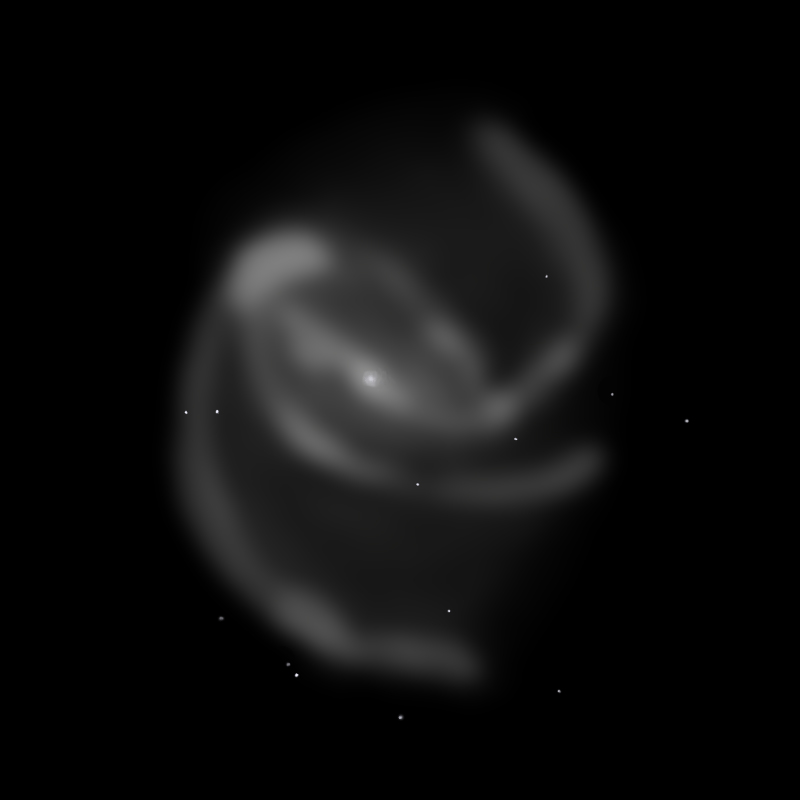
Object Name: M83
Object Type: galaxy
Location: Cherry Springs Dark Sky Park, Pennsylvania
Date: May 16-17, 2012
Media: digital
From my home latitude 42N in hazy Appalachia M83 is difficult to observe, and on my trips south I had only modest aperture with me that could reveal only marginally more. Finally this year I made what I am afraid will remain my definitive observation of M83 for some time. On two nights this May I was observing it with my 16″ ATM/Meade Newtonian from a ridge on the Allegheny Plateau in Pennsylvania (elevation 2400 ft). The galaxy was culminating over an unusually transparent horizon. I measured 21.2 mag/sq arcsec in the area of M83 (it was, as usual, 21.7 overhead). The observation time was approximately two hours, during which I literally had to sit on the ground. The scope-side sketch in ball-pen was a composite of views obtained at various magnifications between 75 and 225 with Pentax and Televue oculars. To produce the drawing presented here, the sketch was scanned, inverted, and finished on a computer using a simulated pencil, blender, airbrush, and filtering. A Wacom Intuos 4 pressure- and tilt-sensitive pen tablet, Corel Sketch Pad software, and Adobe Photoshop were employed at this stage.
